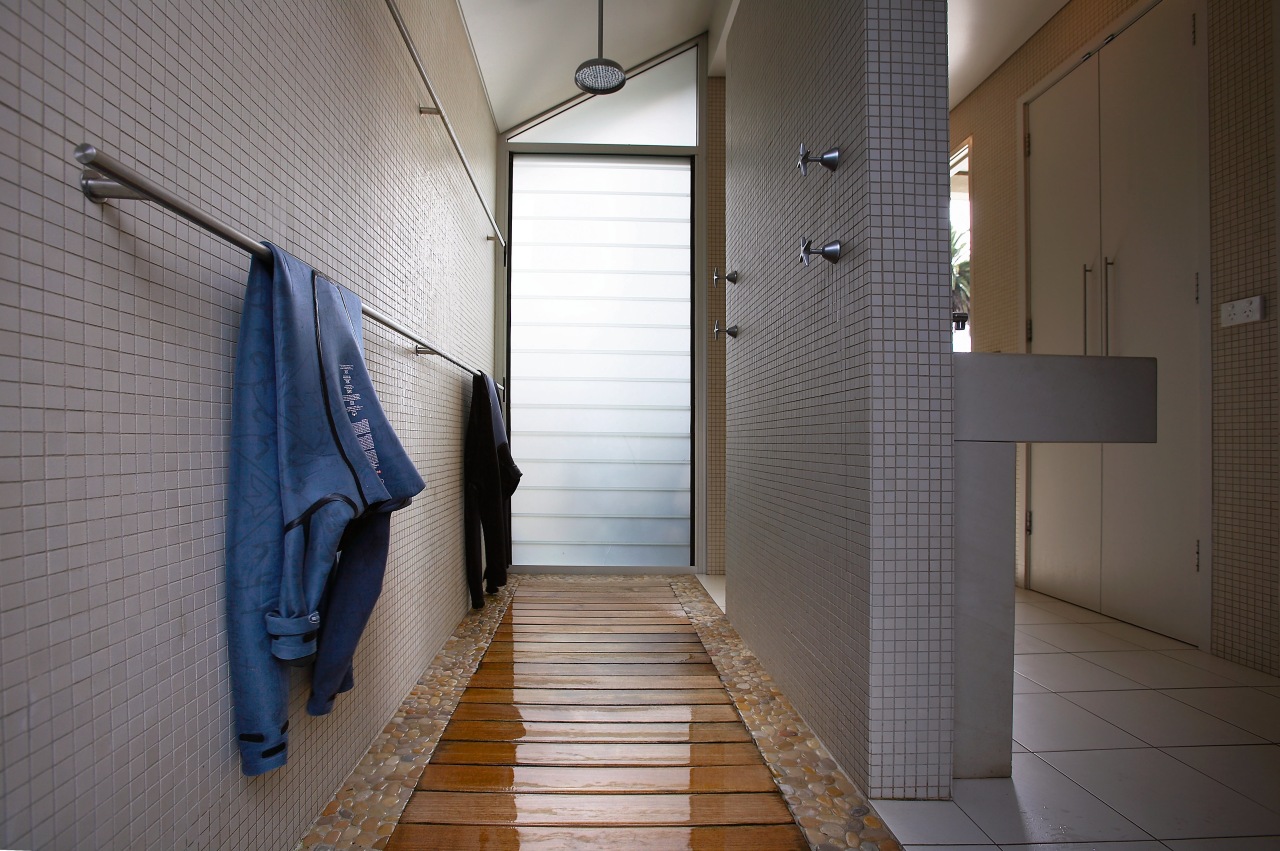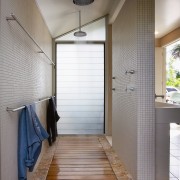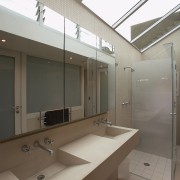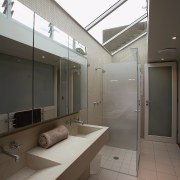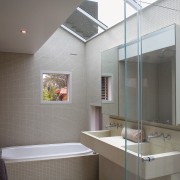Under the boardwalk
The downstairs bathroom caters to aprés-beach, while another one upstairs allows three boys to comfortably share the same space both rooms feature minimalist lines and a common material palette
Separate bathrooms within a residence can have functions that are as varied as the family members who use them. One might provide an easy way to wash the sand out of your hair after a day at the beach, while another might be a bustling bathing station for younger family members. However, materials, textures and design elements can visually pull together the disparate bathrooms, and create a sense of cohesion.
These two bathrooms, created by architect and designer Linda Haefeli, follow this agenda. Because the house is close to the sea, the owners wanted a bathroom near the back door where they could rinse off immediately, without traipsing half the beach through the house on the way to the shower.
"We introduced a long shower space floored with slatted wood to collect any residual sand and ensure it drained away unnoticed," says Haefeli. "Elongated handrails and an oversized heated towel rail mean clothes are never left on the floor, and there is always a dry towel on hand."
The tough teak boards, edged with a pebble inlay, are resistant to salt air and the wood and pebbles are appropriate to the beachfront location.
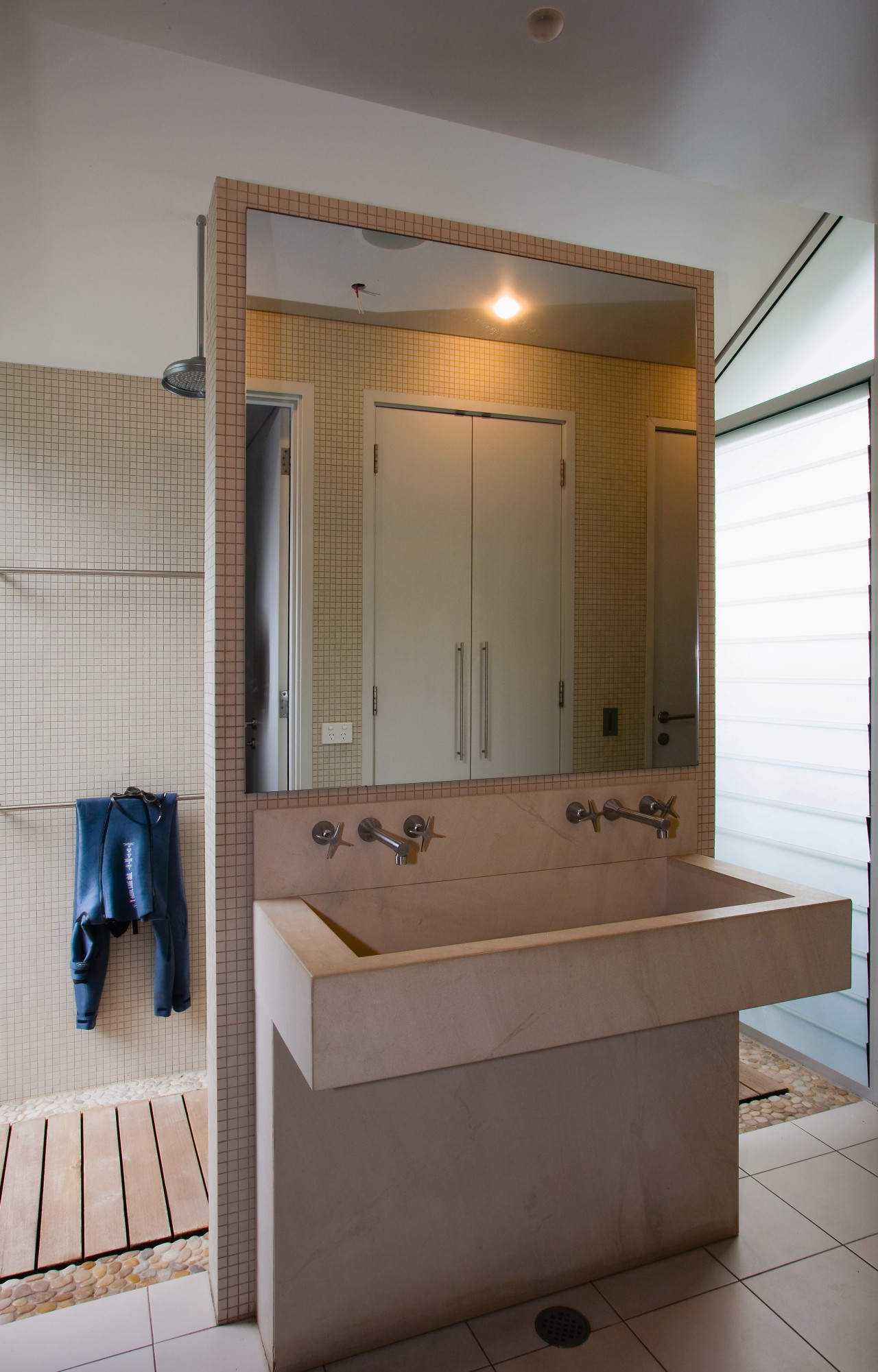
The upstairs bathroom is for the family's three young boys, and was designed to be efficient for multiple users, and easy to keep clean.
"We designed this bathroom so two or even all three children could use the space effectively," says Haefeli. "To this end, there is a double vanity, with the shower and toilet arranged in a row, like cubicles. The far wall of the shower stall is frosted to provide privacy for the toilet cubicle."
Acquisition of sufficient natural lighting for both the bathroom and an adjacent hallway was achieved by introducing a glazed ceiling.
"Frosted windows between the bathroom and the hall maintain privacy for the bathroom's occupants, but also allow light to filter through into the hallway," Haefeli says.
While there are some of individual aspects to each bathroom, the rooms share several design elements that bring them together aesthetically.
"Scale, tone and materials were all linking elements," says Haefeli. "Together with the smooth limestone, both rooms feature porcelain floor and wall tiles. All these tiles are in the same hue, used in differing sizes on the walls and the floors."
Story by: Charles Moxham
Home kitchen bathroom commercial design
